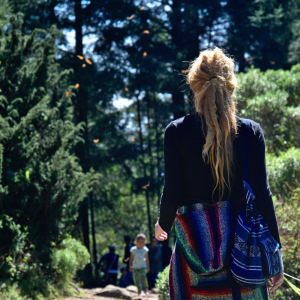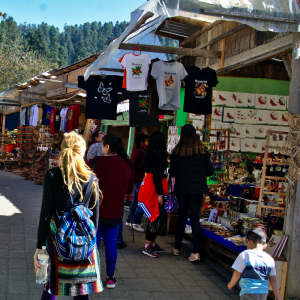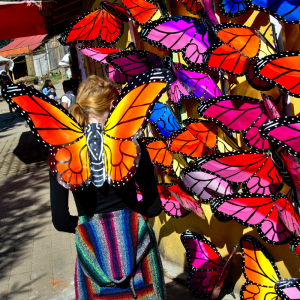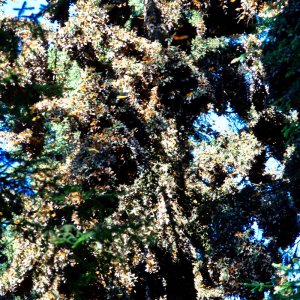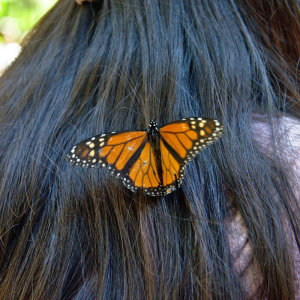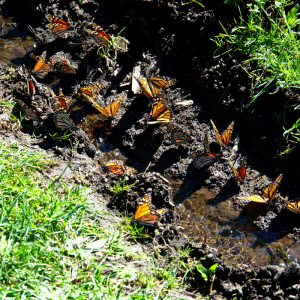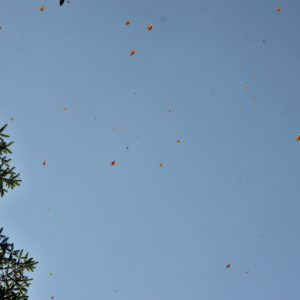Monarch Migration Watch: Last month we shared about how Monarch Butterflies have been migrating south in record numbers but in reality that was just an estimate based on satellite images while they travel. The true test of whether or not the Monarchs were arriving in record numbers depends on how much end up at the resting place in the state of Michoacan, Mexico.
I’ve lived in Mexico for four years but never made it to the butterflies due to work constraints. This year I made a point to go to what’s known as the biggest butterfly sanctuary in Mexico, El Rosario Sanctuary in Ocampo, Michoacan. The sanctuary is actually about 12 kilometers outside of the main city of Ocampo in the mountains that are thick with the signature fur trees they flock there for the warm weather so they can start yet another generation.
More from the Homestead Guru: Killing the Rainforest, Are the U.S. and China in this together?(Opens in a new browser tab)
Every year they show up in the pine forests of Michoacan in December. When I arrived you could see the excitement in them as they fluttered around, soaring up and down the mountain with an excitement that all expats feel when they arrive in Mexico. There was a walk up to the entrance of the Sanctuary filled with a market of people selling food as well as Monarch themed keepsakes.
More from the Homestead Guru: Mexican Engineer Creates Earthquake Resistant Houses from Recycled Plastic(Opens in a new browser tab)
When you get to a certain point, you buy a ticket for 50 pesos and then begins the real hike up to the top of the mountain along guided paths with plenty of rest spots for those who aren’t so physically active. It’s about a 40 minute hike up to the top where the real magic is. It was something special to see people of all ages from being toddlers to the elderly, slowly making the climb to see the butterflies.
When hiking you’re surrounded by flocks of butterflies that are moving so fast it’s hard to get images of them. I know, because I tried. Eventually the ground levels out at the top and there were little streams where bunches of butterflies could be seen drinking. I thought this was the best part, but I was wrong. Where they were drinking was in a little field, but where the magic was happened to be a bit further in the forest.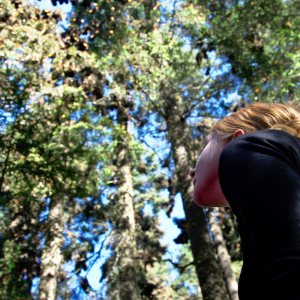
Employees of the sanctuary were standing guard on this road that went a bit into the forest where there were old pine trees. The road was blocked off at a point and people were told to stay quiet as to not scare the butterflies. There were hushed whispers of “WOW” and that was it.
A little in the distance you could see the butterflies, probably in the millions coating the pine trees. They were resting and there were way more than I even expected. The people who go there annually talked of the huge amounts of butterflies compared to previous years and while we didn’t have any sort of count, it was obvious that the hype was right, this was a record breaking migration.
We stayed taking photos for about 20 minutes. It was absolutely amazing to see the huge flocks of butterflies, painting the tree orange with their wings and intense cover. The uphill hike was worth it and I consider this to be a life changing experience, one of my favorite adventures of 2019. If there’s one thing I know, it’s that I’ll be visiting this sanctuary annually to see this marvel.
On the way down we ran a bit on the path, I couldn’t help but feel like a butterfly as well as we soared to the bottom. Running was magical but not advised, as even I fell at a point, but I don’t regret the memory of soaring through the pine forest surrounded by the fluttering orange beauties.
In February, they will fly again and it seems like I will go again with friends to see them off, as they fly north to the Northern United States and Canada.
If you ever have a chance to go to Mexico during December, visiting the butterflies comes highly recommended. Not only is it a lot of fun to witness the natural marvel, it’s kind of awesome to see how the locals capitalize by making and selling their butterfly themed crafts.
More from the Homestead Guru: Ireland Promises to Plant Half Billion Trees by 2040(Opens in a new browser tab)

